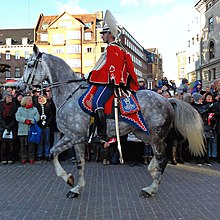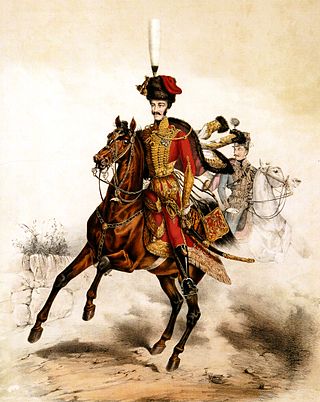
A hussar was a member of a class of light cavalry, originating in Central Europe (Hungary) during the 15th and 16th centuries. The title and distinctive dress of these horsemen were subsequently widely adopted by light cavalry regiments in European armies during the late 17th and 18th centuries. By the 19th century, hussars were wearing jackets decorated with braid plus shako or busby hats and had developed a romanticized image of being dashing and adventurous.

The attila is an elaborately braided Hungarian shell-jacket or short coat, decorated with lace and knots. Historically it was part of the uniform of the Hungarian cavalry known as hussars. It was a part of the everyday wear of rural men as well as members of the nobility and officials.
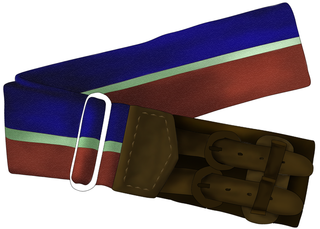
A stable belt is a striped coloured belt worn at times by the armed forces of the United Kingdom, other Commonwealth countries, and a few other countries including Denmark, Brazil and Lebanon. The stripes vary by regiment and corps, identifying the wearer's unit. In Brazil and Lebanon they are known as gymnastic belts.
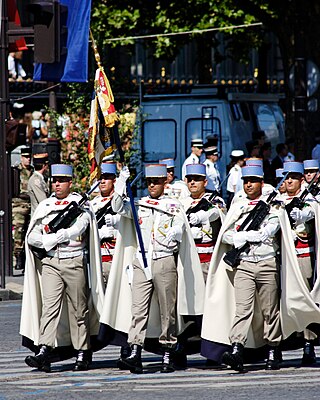
Spahis were light-cavalry regiments of the French army recruited primarily from the Arab and Berber populations of Algeria, Tunisia and Morocco. The modern French Army retains one regiment of Spahis as an armoured unit, with personnel now recruited in mainland France. Senegal also maintains a mounted unit with spahi origins as a presidential escort: the Red Guard.

A military uniform is a standardised dress worn by members of the armed forces and paramilitaries of various nations.

The Guard Hussar Regiment is a cavalry unit of the Royal Danish Army, whose primary task is to train the Guard Hussars for various functions in the mobilisation force. The Guard Hussar Regiment is one of two active cavalry regiments of the Danish Army, and was formed in 2001 through the amalgamation of the original Guard Hussars regiment, Zealand Life Regiment and Danish Life Regiment.
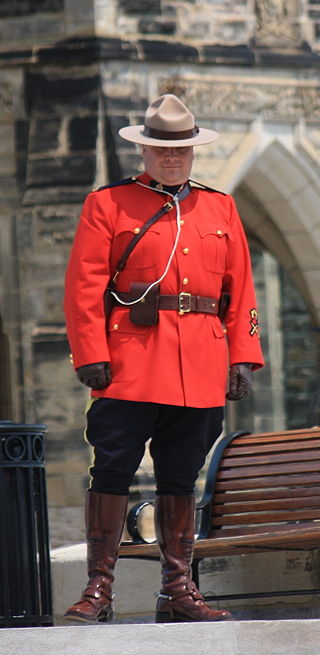
The Red Serge refers to the jacket of the dress uniform of the Royal Canadian Mounted Police. It consists of a scarlet British-style military pattern tunic, complete with a high-neck collar and blue breeches with yellow stripe identifying a cavalry history.

An aiguillette, also spelled aguillette, aiglet or aglet, is a cord with metal tips or lace tags, or the decorative tip itself.

Full dress uniform, also known as a ceremonial dress uniform or parade dress uniform, is the most formal type of uniforms used by military, police, fire and other public uniformed services for official parades, ceremonies, and receptions, including private ones such as marriages and funerals. Full dress uniforms typically include full-size orders and medals insignia. Styles tend to originate from 19th century uniforms, although the 20th century saw the adoption of mess dress-styled full-dress uniforms. Designs may depend on regiment or service branch. In Western dress codes, full dress uniform is a permitted supplementary alternative equivalent to the civilian white tie for evening wear or morning dress for day wear – sometimes collectively called full dress – although military uniforms are the same for day and evening wear. As such, full dress uniform is the most formal uniform, followed by the mess dress uniform.

A pelisse was originally a short fur-trimmed jacket which hussar light-cavalry soldiers from the 17th century onwards usually wore hanging loose over the left shoulder, ostensibly to prevent sword cuts. The name also came to refer to a fashionable style of woman's coat-like garment worn in the early-19th century.
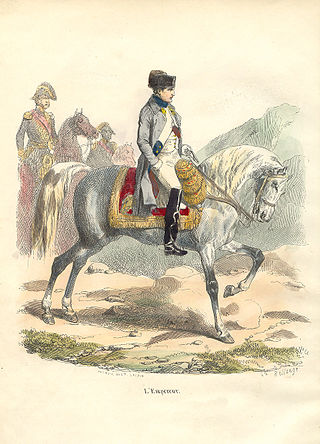
The uniforms of La Grande Armée, the army of Napoleon I, are described in this article.
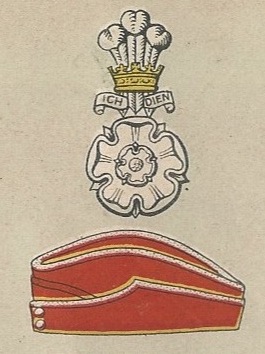
The Yorkshire Hussars was an auxiliary unit of the British Army formed in 1794. The regiment was formed as volunteer cavalry (Yeomanry) in 1794 during the French Revolutionary Wars and served in the Second Boer War and the First World War. It was converted to an armoured role during the Second World War. In 1956, it merged with two other Yorkshire yeomanry regiments to form the Queen's Own Yorkshire Yeomanry. Its lineage is continued today by the Queen's Own Yeomanry.

The Éclaireurs of the Guard was a Corps of cavalry scouts of the French Imperial Guard, which included three cavalry regiments created by Napoleon when he reorganised the Imperial Guard following the disaster of the French invasion of Russia. The Corps was created in Article I of the decree of 4 December 1813.
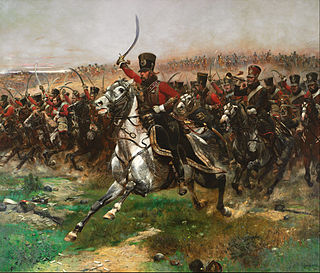
The 4th Hussar Regiment is a hussar regiment in the French Army, raised and embodied in 1783 and still in existence.

Hussars were first recorded in Russia as groups of irregulars in the mid-17th century. Under Peter I, this class of light cavalry began to serve as organized regiments on a semi-permanent basis in 1723 based on Serbian Hussars out of the Habsburg monarchy. Hussar regiments remained a conscious element of the Imperial Russian Army until the Revolution of 1917.

The Uniforms of the Royal Danish Army distinguish soldiers from other service members. Royal Danish Army uniforms were originally influenced by French, Prussian and Russian military traditions. However, in more recent times, its uniforms have been characterized as being influenced by British uniforms, and, more significantly, American uniforms.

The Hussards de la Mort or Death Hussars were a French light cavalry company formed during the French Revolution.
Life Guards of Horse was a Swedish Army cavalry regiment, first raised in 1770. It saw service for two centuries, before being amalgamated with the Life Regiment Dragoons to form the Life Regiment of Horse in 1928.
This is an outline of the British Army's light cavalry during the Napoleonic Wars, which consisted of the Light Dragoons and later Hussars, and from 1816 the lancers.
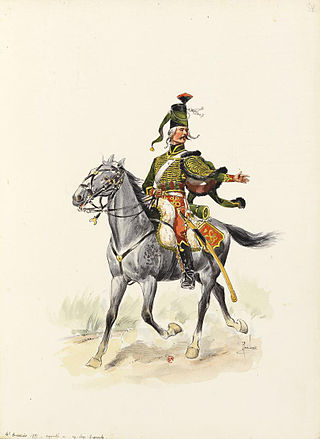
The Légion de Conflans later the Régiment de Saxe Hussards was a German-French legion formed during the War of the Austrian Succession. The legion would later serve in the Seven Years' War, but like the other French legions, legion was split and became a hussar regiment. However, following the beginning of the French Revolution, the regiment emigrated en masse and was disbanded shortly thereafter.


